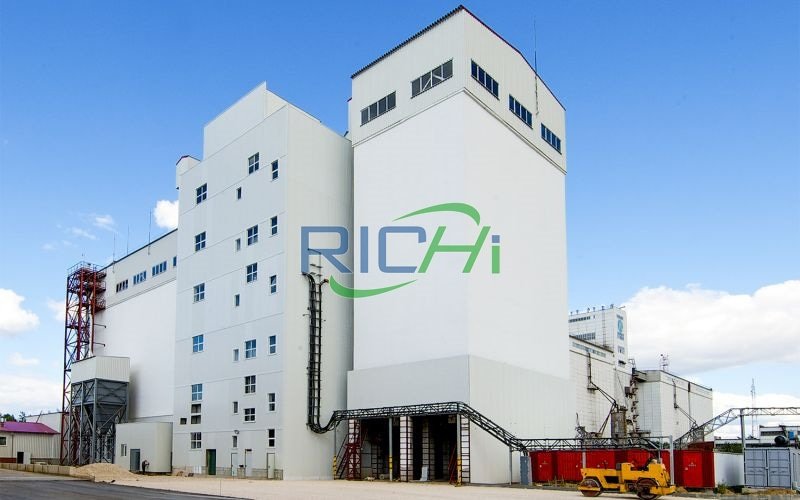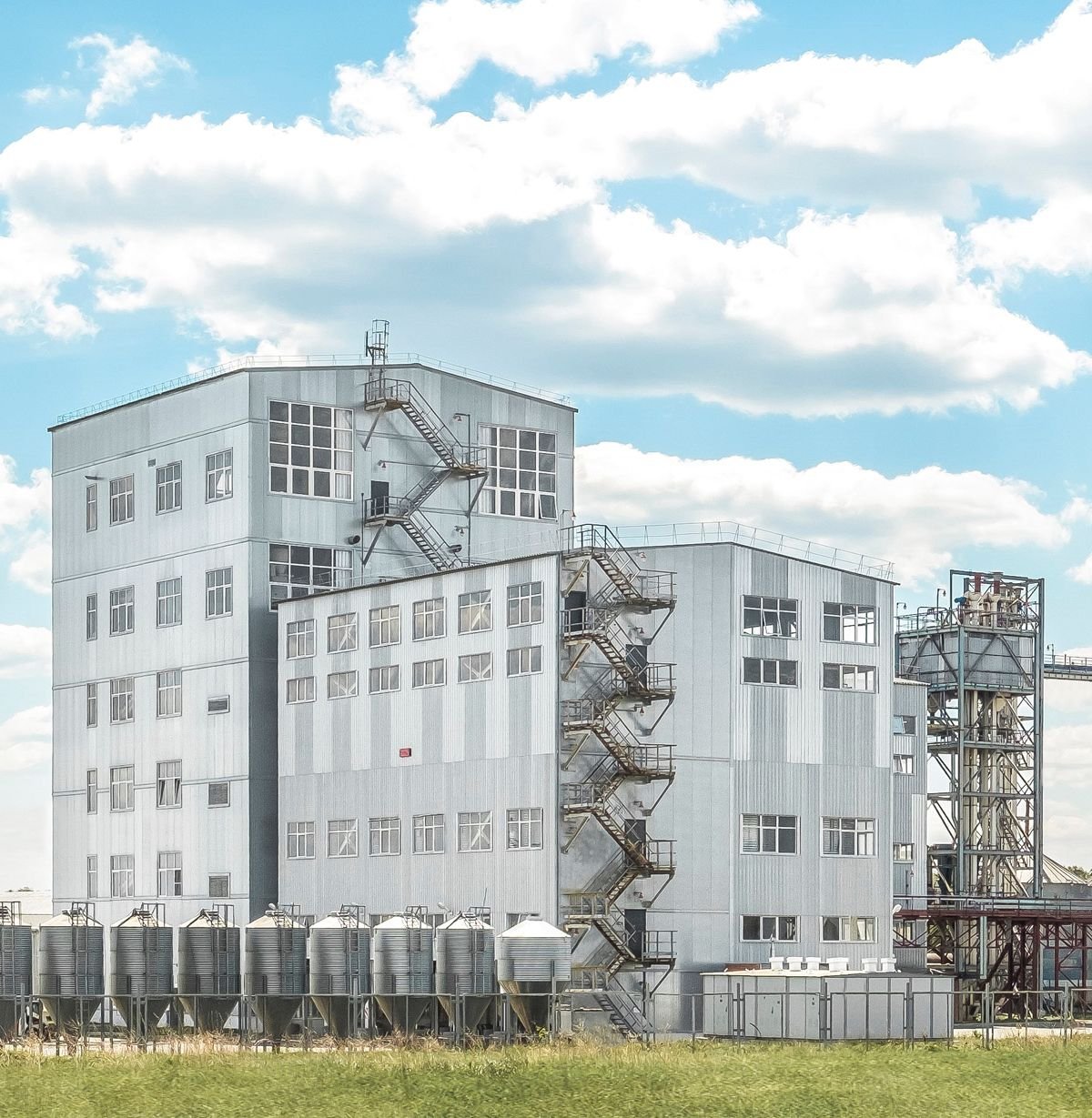Establishing a large commercial feed mill in Russia requires significant capital investment, careful planning, and consideration of various factors specific to the Russian market. This article explores the key components of investment needed to build a state-of-the-art feed mill in Russia, taking into account the country’s unique economic and agricultural landscape.
Scale and Capacity Considerations
Before delving into specific investment figures, it’s crucial to define what constitutes a “large” commercial feed mill in the Russian context. Given Russia’s substantial agricultural sector and growing livestock industry, a large-scale feed mill would typically have a production capacity of at least 250,000 to 500,000 metric tons per year. Some of the largest facilities in Russia, such as those operated by major agro-holdings like Miratorg, can produce over 1 million metric tons annually.
Land Acquisition and Site Preparation
The cost of land varies significantly across Russia, depending on the region and proximity to key agricultural areas and transportation infrastructure. For a large feed mill:
- Land acquisition: $500,000 to $2 million
- Site preparation and infrastructure development: $1 million to $3 million
Building Construction
The construction of the main production facility, storage silos, warehouses, and auxiliary buildings represents a substantial portion of the investment:
- Main production facility: $10 million to $20 million
- Storage silos and warehouses: $5 million to $10 million
- Auxiliary buildings (offices, laboratories, etc.): $2 million to $4 million
Related post:https://www.pellet-richi.com/aquafeed-production-line/8tph-fish-feed-production-line-in-russia.html
Equipment and Technology
Modern feed mills require sophisticated equipment for efficient and high-quality production:
- Grinding and mixing equipment: $3 million to $6 million
- Pelleting and extrusion systems: $4 million to $8 million
- Automation and control systems: $2 million to $4 million
- Material handling and conveying systems: $3 million to $5 million
- Packaging and loadout systems: $1 million to $2 million
Utilities and Environmental Systems
Ensuring proper utility connections and environmental compliance is crucial:
- Electrical systems and substations: $2 million to $4 million
- Water supply and treatment systems: $1 million to $2 million
- Dust collection and air filtration systems: $1.5 million to $3 million
- Wastewater treatment facilities: $1 million to $2 million
Quality Control and Laboratory Equipment
A well-equipped laboratory is essential for maintaining product quality:
- Laboratory equipment and systems: $500,000 to $1 million
Licensing and Permits
Navigating Russia’s regulatory environment requires investment in legal and administrative processes:
- Licensing, permits, and regulatory compliance: $200,000 to $500,000
Initial Working Capital
Sufficient working capital is needed to cover initial operations, raw material purchases, and unforeseen expenses:
- Working capital: $5 million to $10 million
Total Investment Range
Summing up these components, the total investment required for a large commercial feed mill in Russia typically falls within the range of $40 million to $80 million. This wide range accounts for variations in scale, location, and specific technological choices.
Factors Influencing Investment in Russia
Several factors specific to the Russian market can influence the total investment required:
- Currency Fluctuations: The volatility of the Russian ruble can impact the cost of imported equipment and materials. It’s often advisable to budget in a stable currency (e.g., USD or EUR) and account for potential exchange rate fluctuations.
- Import Substitution Policies: Russia’s push for import substitution may affect the choice of equipment suppliers. While some companies may opt for domestically produced equipment to reduce costs, others might prioritize international brands for quality and reliability, potentially increasing the investment.
- Regional Incentives: Some Russian regions offer incentives for agricultural investments, which could reduce the overall investment needed. These may include tax breaks, subsidized loans, or assistance with infrastructure development.
- Scale Economies: Larger facilities often benefit from economies of scale, potentially reducing the per-ton investment cost for very high-capacity plants.
- Automation Level: The degree of automation can significantly impact the investment. Highly automated facilities require more upfront capital but can reduce operational costs in the long run.
- Raw Material Sourcing: Proximity to raw material sources can influence the investment in storage and handling facilities. Russia’s vast geography means that some locations may require more substantial investments in logistics infrastructure.
Financing Considerations
Financing a large feed mill project in Russia often involves a combination of sources:
- Equity Investment: Typically, investors are expected to contribute 30-40% of the total project cost as equity.
- Bank Loans: Russian banks and international financial institutions may provide loans for the remaining 60-70%. Interest rates and terms can vary widely based on the project’s risk profile and the investor’s creditworthiness.
- Government Support: The Russian government offers various support mechanisms for agricultural projects, including subsidized loans and grants, which can reduce the overall investment burden.
- Strategic Partnerships: Some investors choose to partner with established Russian agro-holdings or international feed companies to share the investment load and leverage existing market knowledge.
Return on Investment Considerations
When planning such a significant investment, it’s crucial to consider the potential return on investment (ROI). Factors affecting ROI include:
- Market demand and pricing for animal feed in Russia
- Operational efficiency and production costs
- Raw material costs and availability
- Competition from other domestic and international producers
- Export potential, particularly to neighboring countries
Typically, investors in large Russian feed mills aim for a payback period of 5-7 years, though this can vary based on market conditions and operational efficiency.
Conclusion
Building a large commercial feed mill in Russia requires a substantial investment, typically ranging from $40 million to $80 million. This investment covers not only the physical construction and equipment but also the necessary infrastructure, regulatory compliance, and initial working capital. The exact figure depends on various factors, including location, scale, technology choices, and market conditions.While the investment is significant, Russia’s growing agricultural sector and increasing focus on domestic food production present opportunities for well-planned and efficiently operated feed mills.
Investors must carefully consider all aspects of the project, from initial planning to long-term operational strategies, to ensure success in the dynamic Russian agricultural market.As with any major investment in Russia, thorough due diligence, strong local partnerships, and a clear understanding of the regulatory and economic landscape are essential for navigating the challenges and capitalizing on the opportunities in this important sector of the Russian economy.










